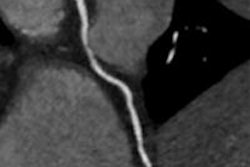Refining your CT protocols is a great way to accomplish a number of goals, including radiation dose reduction, workflow efficiency, and meeting new accreditation requirements. A team approach is best for the task, according to a new article that offers guidance in the March Journal of the American College of Radiology.
The process requires a systematic review of each protocol and a decision as to whether it's optimal, according to authors James Kofler, PhD, Dianna Cody, PhD, and Richard Morin, PhD. Then the protocol team actually has to do the work on an ongoing basis, and they need a blueprint to guide them -- which is the purpose of the JACR article, Kofler told AuntMinnie.com in an interview.
"We wanted to communicate a method to the community on how to approach this problem, and discuss some philosophical issues on what it really means to review and try to optimize these protocols," said Kofler, who is a medical physicist at the Mayo Clinic in Rochester, MN. "Everybody says it should be done, but nobody really provides any details on how to do it."
Kofler emphasized that optimizing CT protocols takes a team approach, with a radiologist, physicist, and technologist involved, along with others depending on the particular protocol.
"Each of them provides a perspective that the others don't have," Kofler said. The radiologist serves as the clinical expert, the technologist is the workflow and patient care expert, and the medical physicist is the technical expert.
Core team members provide a critical review of all aspects of CT protocols and evaluate proposed improvements, the study authors wrote. Protocol changes are implemented only with consensus of the team, which looks at the CT exam from several perspectives, including image quality, radiation dose, patient care and safety, and workflow issues.
CT protocols contain instructions that determine every aspect of the image data, such as dose, contrast injection rates and amounts, reconstruction and reformats, networking, and billing, the authors wrote.
"The protocol goal is to communicate these elements to the CT staff members so they can successfully perform scans without incident, ensuring positive patient experiences and high-quality, consistent diagnostic image data," they wrote. But far from existing in a vacuum, the elements must be considered together -- for example, the best image quality is at odds with the lowest radiation dose (JACR, March 2014, Vol. 11:3, pp. 267-270).
Periodic protocol reviews help ensure that all elements of the protocol are consistent with best practice standards, Kofler and colleagues wrote.
The protocol process
The revision team must go through each protocol line by line, examining conditions for readability, including clear and concise instructions, the team wrote.
Protocol components should be discussed at review meetings, and other staff members such as specialized radiologists and nursing, billing, and scheduling representatives should be asked to participate as needed. At the end of the process, outdated or unnecessary protocols should be archived and removed, according to the authors.
"A general starting point in protocol review is to determine whether staff members are aware of any issues," they wrote. "Do the technologists have issues with the scan, such as tube cooling delays or patient breath-hold problems? Have they heard concerns from the radiologists? Do the radiologists have issues with image quality? How does the dose index compare with national data (e.g., the ACR Dose Index Registry [DIR])? Could the dose be reduced, even slightly?"
When a review process has been established, staff members will be more willing to offer suggestions for improvements, Kofler and colleagues wrote.
Consistency is key
Another area to examine is consistency among similar protocols, such as differences in the abdominal component of chest and abdomen versus abdomen and pelvis scans. The team should scrutinize the whole range of protocol components for similar exams, including technique, reconstruction algorithms and filters, slice thickness, etc., to scope out inconsistencies.
When multiple changes to a protocol are needed, implementing them in steps can avoid negative effects on image quality and even nondiagnostic images. Phantom images may be needed to ensure consistent quality, the authors wrote.
Modifications might also include a smoother reconstruction algorithm or the use of thicker images; because these changes can influence diagnostic value, they should be evaluated on a case-by-case basis by the radiologist. Reducing the tube current should involve trial runs in controlled environments to determine applicability for patient groups. In addition, "dose budgeting" strategies to ensure that the total dose remains low should be implemented for multiphase examinations, they wrote.
During evaluation, the protocol team should determine if any new technologies or new scanner features can be applied to improve images. Protocols that haven't changed in years are suspect; maybe a scanner upgrade was missed, and the system could benefit from the addition of automatic exposure control (AEC), for example.
With respect to contrast, the optimal postinjection scan delay depends on the patient's physiologic condition, the authors noted. As a result, the protocol team must carefully assess the scan delay for each protocol and describe in small steps which combination of injection parameters and scan delays is appropriate.
Labeling and strategy review
Reviews are the time to ensure that protocol and series names are appropriate and consistent between the written protocols and the protocols programmed into the scanners, Kofler and colleagues wrote. This step helps ensure that the right protocol is prescribed.
"Consistency really helps efficiency, and it also takes some of the burden away from the [protocol] authors," who can rely on a single phrase to signify a single and consistent instruction, Kofler said.
Moreover, PACS often incorporates algorithms that use series names to present the order in which images appear on workstations. Series that are not listed correctly can interrupt workflow. Also, for facilities in the American College of Radiology DIR or that use dose-tracking software, the reliability of the report depends on the accuracy of the protocol nomenclature. Therefore, nomenclature such as the RadLex Playbook should be written into protocols and scanners, and names should be verified and confirmed during later protocol reviews.
Logistics should be systematically reviewed as well, with proposed changes sent to a member of the core team and routed to the protocol technologist, who compiles a list of requests for the next protocol review meeting agenda.
Urgent concerns should be addressed immediately, while protocols scheduled for annual review can be added to a future agenda. Typos, formatting, and file management are not appropriate items for the protocol meeting.
Mayo is divided into divisions such as cardiac, abdominal, and thoracic imaging, and each has its own protocols, Kofler said. Regularly scheduled meetings for each protocol should include all of the interested parties, including at least the core trio of radiologist, technologist, and medical physicist.
Protocols are a critical part of CT practice, and a process should be implemented to ensure they are current, given the continual development of new features, methods, and technologies, the study team concluded. The protocol review process requires significant time and resources, but the potential improvements justify the effort.
"One misconception is that people think they have to cut the dose down by 50% or so," Kofler said. "That's not necessarily the goal. The goal is to improve the protocol -- to reduce the dose or improve the image quality in any way you can. And if you can step it down in little increments, those might not even be noticed by the radiologist, but yet you are shaving off the dose little by little. If you can do that over the long term, you end up with some big gains."



















